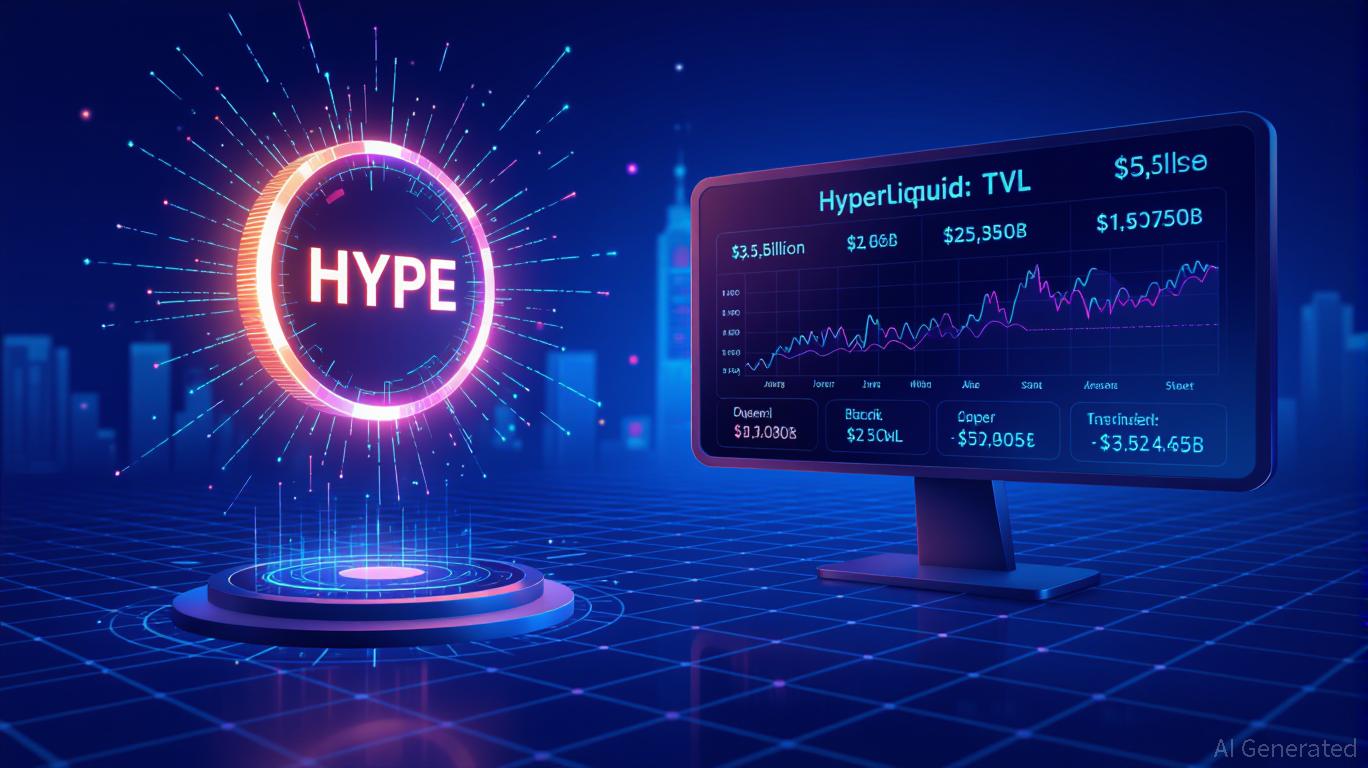Polymarket's 25% Fake Volume Poses a Risk to the Trustworthiness of Prediction Markets
- Columbia researchers found 25% of Polymarket's trading volume is artificially inflated via wash trading, peaking at 60% in December 2024. - The study attributes this to Polymarket's fee-free model and pseudonymous wallets enabling linked accounts to manipulate volume metrics. - Sports markets showed 45% artificial activity, raising concerns about prediction markets' reliability as public sentiment indicators. - Polymarket's planned U.S. re-entry under CFTC regulation faces scrutiny amid claims that 48% o
Researchers from Columbia University have discovered that as much as a quarter of all trading on Polymarket—a major blockchain-based prediction market—may be artificially boosted through tactics like wash trading. The study, led by Yash Kanoria from Columbia Business School and Rajiv Sethi from Barnard College, reveals that repeated transactions between related accounts have skewed the platform’s reported trading volumes, according to a
To uncover these patterns, the team created a network analysis tool that flagged wallets frequently trading with each other but rarely interacting with outsiders. Their research, which appears on the open-access site
, suggests that, on average, 25% of trades over the last three years were wash trades, with the proportion spiking to 60% in December 2024.

While the study stops short of accusing Polymarket of direct involvement, it points to certain platform features that facilitate this behavior. These include no transaction fees, which make repeated trades inexpensive, and the use of pseudonymous blockchain wallets, which allow users to operate multiple accounts. Polymarket has yet to issue a formal response, stating it is currently evaluating the study.
This news comes as Polymarket sees a spike in user activity, fueled by its recent announcement of a POLY token airdrop and its intention to re-enter the U.S. market. In October 2025, the platform reported more than 477,000 active users and $3 billion in trades, representing a 48% monthly jump in users and double the previous month’s trading volume, as reported by
. Yet, the research indicates that much of this apparent growth could be due to non-genuine trading rather than real market interest.
The study’s results cast doubt on the reliability of prediction markets as tools for harnessing collective intelligence. Wash trading, which is illegal in regulated U.S. markets, can deceive participants by inflating perceived liquidity and demand. The authors stress that being able to separate legitimate trading from artificial volume is essential for accurately gauging Polymarket’s true market position and for preserving confidence in prediction markets as trustworthy reflections of public opinion.
Artificial trading is not exclusive to Polymarket. Research from 2022 found that 70% of trading on unregulated crypto exchanges was inflated by wash trades. Polymarket’s situation stands out due to its rapid expansion and its upcoming U.S. relaunch, which could subject it to greater regulatory oversight. The company plans to return to the U.S. market through QCX, a CFTC-regulated exchange, after settling with regulators in 2022 over unlicensed trading.
At the same time, rival platform Kalshi has been gaining popularity, especially in sports prediction markets, though its non-blockchain design makes it less transparent for academic analysis. The overall prediction market industry is thriving, with Kalshi reporting $4.4 billion in trading volume for October.
Disclaimer: The content of this article solely reflects the author's opinion and does not represent the platform in any capacity. This article is not intended to serve as a reference for making investment decisions.
You may also like
Central Bank Issues Historic Penalty: Adhering to Crypto Regulations Is Now Essential
- Ireland's Central Bank fined Coinbase Europe €21.5M for AML/CFT failures, marking its first crypto enforcement action. - Systemic flaws allowed 30M unmonitored transactions (€176B) due to software errors and governance gaps. - Regulators emphasized crypto compliance urgency, citing MiCA regulations and law enforcement collaboration risks. - Coinbase acknowledged technical errors but faced reduced penalties via early settlement under regulatory programs. - Case highlights EU's intensified crypto oversight
Fed's Balancing Act: Navigating Inflation and Employment in the 2025 Interest Rate Challenge
- The Fed debates 2025 rate cuts to balance 3% inflation control with a cooling labor market, as policymakers like Jefferson advocate a slow easing approach. - Mixed signals persist: U.S.-China trade deal eased volatility but left businesses cautious, while Matson's 12.8% China service decline highlights lingering tensions. - Market expects 25-basis-point December cut, but Powell warns uncertainty remains, compounded by government shutdown limiting key data access. - Rate-cut expectations boosted municipal

Bitcoin News Update: Institutions Pour In Funds Despite Bitcoin Downturn: ETFs Draw $240M During Market Turbulence
- Bitcoin ETFs saw $240M net inflows on Nov 6, ending a six-day outflow streak led by BlackRock's IBIT and Fidelity's FBTC. - Despite Bitcoin's 9% weekly price drop to $100,768, institutional confidence grew in regulated, low-fee ETF products amid market volatility. - Altcoin ETFs gained traction while total crypto ETPs faced $246.6M outflows, highlighting diverging investor priorities. - Analysts attribute Bitcoin's decline to internal dynamics, not ETFs, as on-chain data shows easing sell-pressure and st

Hyperliquid's 2025 Boom: Blockchain-Based Liquidity and Shifting Retail Trading Trends
- Hyperliquid's TVL surged to $5B in Q3 2025, capturing 73% of decentralized perpetual trading volume via on-chain liquidity and retail demand. - Technological innovations like HyperEVM and strategic partnerships drove $15B open interest, outpacing centralized rivals' combined liquidity. - Retail traders executed extreme leverage (20x BTC/XRP shorts) and $47B weekly volumes, highlighting both platform appeal and liquidation risks. - Institutional interest (21Shares ETF application) and deflationary tokenom
